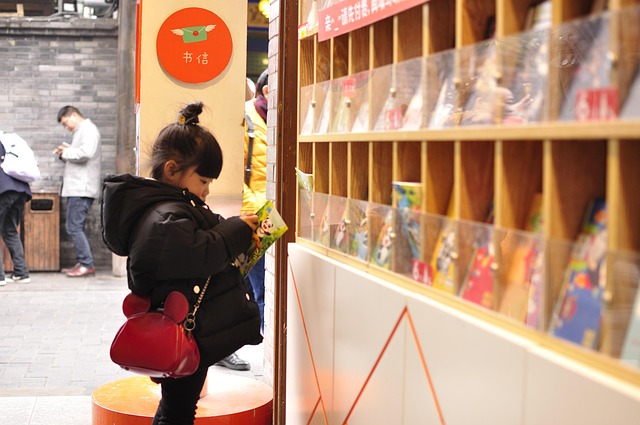In today’s high‑velocity market, businesses increasingly rely on autonomous systems to maintain competitive edges. Central to these systems are sensor dynamics—the way sensors capture, process, and relay real‑time data to artificial intelligence models. When sensor dynamics are finely tuned, AI can interpret environmental cues with higher precision, leading to smarter decision‑making, reduced downtime, and streamlined operations. This article explores how companies can optimize sensor dynamics to unlock the full potential of robotics, AI, and automated business processes.
Understanding Sensor Dynamics in the Context of Automation
Sensor dynamics refer to the temporal and spatial characteristics of a sensor’s response to changes in its surroundings. Key parameters include bandwidth, latency, resolution, drift, and noise floor. For AI‑driven systems, these parameters directly influence the quality of data fed into neural networks and decision algorithms.
- Bandwidth: Determines how quickly a sensor can capture rapid changes, critical for high‑speed robotic arms.
- Latency: The delay between signal acquisition and data availability; lower latency yields more responsive control loops.
- Resolution: Higher resolution allows for finer distinctions in sensor readings, improving classification accuracy.
- Noise & Drift: Persistent errors that can degrade model performance unless mitigated through calibration or filtering.
In the manufacturing sector, for example, a robotic weld station that relies on optical sensors must balance high bandwidth to track moving parts while minimizing noise that could mislead the AI controlling the weld trajectory.
AI Integration: From Raw Data to Insightful Decisions
Artificial intelligence excels when it receives clean, representative data. Optimizing sensor dynamics serves as a pre‑processing step that improves the downstream performance of machine learning models. The integration workflow typically follows these stages:
- Data Acquisition: Sensors capture signals in raw form, influenced by their dynamic properties.
- Signal Conditioning: Filters and amplifiers correct for latency, noise, and drift before the data reach the AI module.
- Feature Extraction: AI algorithms transform conditioned signals into meaningful features—speed, temperature gradients, vibration spectra.
- Decision Engine: A trained model applies these features to predict outcomes, such as part quality or optimal motion paths.
- Actuation: The AI’s output drives robotic hardware, completing the closed loop.
In logistics, for instance, a fleet of autonomous forklifts uses lidar and ultrasonic sensors. By optimizing the dynamic response of these sensors—reducing latency to a few milliseconds—AI can accurately navigate through crowded aisles in real time, preventing collisions and enhancing throughput.
Robotics Applications That Thrive on Optimized Sensor Dynamics
Robots operating in variable environments benefit immensely from finely tuned sensor dynamics. The following use cases illustrate this synergy:
- Adaptive Gripping: Humanoid robots use force sensors with low drift to modulate grip strength on fragile objects, guided by AI that interprets sensor feedback.
- Precision Assembly: High‑resolution camera systems track micro‑features on components, feeding data into convolutional neural networks that control robotic manipulators with sub‑millimeter accuracy.
- Autonomous Inspection: Drones equipped with thermal imaging sensors adjust their scanning speed based on dynamic sensor bandwidth, allowing AI to detect defects on large infrastructure panels efficiently.
- Warehouse Automation: Collaborative robots (cobots) rely on proximity sensors with minimal latency to safely interact with human workers, while AI continuously assesses task priority and adjusts motion trajectories.
Across these scenarios, the common thread is that AI’s predictive power is only as good as the data quality delivered by the sensor dynamics. When sensors respond too slowly or produce noisy signals, the AI model’s confidence drops, leading to sub‑optimal or unsafe behavior.
Case Studies: Business Automation Achieved Through Sensor Dynamics
Below are concise examples of companies that achieved measurable improvements by fine‑tuning their sensor dynamics:
- Automotive Assembly Plant: By upgrading vibration sensors with higher bandwidth and implementing real‑time Kalman filtering, the plant reduced assembly line downtime by 18% and increased defect detection rates by 12%.
- E‑Commerce Fulfilment Center: Optimized RFID tag read rates and reduced signal latency allowed AI‑driven picking robots to process items 30% faster, boosting overall throughput.
- Pharmaceutical Production Facility: Precision temperature sensors with improved drift characteristics enabled AI models to maintain stringent environmental controls, cutting batch rejection rates from 5% to 1.5%.
- Logistics Company: Implementing low‑latency lidar in autonomous delivery trucks resulted in a 25% reduction in route deviations and a 22% increase in on‑time deliveries.
These successes demonstrate that investments in sensor dynamics—whether through hardware upgrades or sophisticated signal conditioning—translate directly into operational efficiencies, cost savings, and higher product quality.
Future Trends: Sensor Dynamics and the Next Wave of Automation
Emerging technologies are pushing the limits of what sensor dynamics can achieve, opening new horizons for AI‑driven business automation.
- Hybrid Sensor Fusion: Combining data from multiple modalities—such as vision, acoustic, and tactile sensors—enables AI systems to develop richer contextual awareness, mitigating the weaknesses of any single sensor’s dynamics.
- Edge Computing for Low‑Latency Processing: Deploying AI inference directly on sensor nodes reduces transmission latency, making real‑time decision making possible even in bandwidth‑constrained environments.
- Self‑Calibrating Sensors: Adaptive algorithms can detect drift and automatically recalibrate sensor outputs, preserving data fidelity over long operational periods.
- Quantum‑Enhanced Sensing: Early prototypes of quantum sensors promise unprecedented sensitivity and speed, potentially redefining sensor dynamics for critical applications such as autonomous vehicles and high‑precision robotics.
- Standardization of Dynamic Parameters: Industry consortia are developing shared benchmarks for sensor dynamics, facilitating cross‑platform compatibility and accelerating AI model deployment.
Companies that anticipate and adopt these trends can secure a competitive advantage, turning sensor dynamics from a technical detail into a strategic asset.
Practical Recommendations for Optimizing Sensor Dynamics
To harness the full potential of sensor dynamics, businesses should consider the following actionable steps:
- Conduct a dynamic audit of existing sensors—measure bandwidth, latency, resolution, noise, and drift to identify bottlenecks.
- Invest in high‑performance signal conditioning hardware (low‑noise amplifiers, digital filters) that matches the AI’s sampling requirements.
- Implement real‑time calibration protocols to correct for drift and temperature variations, ensuring consistent data quality.
- Leverage sensor fusion techniques to compensate for individual sensor weaknesses, enhancing overall system robustness.
- Adopt edge‑AI architectures that process data near the sensor source, reducing latency and preserving bandwidth.
- Monitor performance metrics such as AI confidence scores and error rates to quantify the impact of sensor dynamics improvements.
By systematically addressing sensor dynamics, organizations can lower the entry barrier for advanced AI applications and achieve reliable, high‑throughput automation.
Conclusion: Sensor Dynamics as the Cornerstone of Intelligent Automation
Optimizing sensor dynamics is no longer an optional refinement; it is a foundational requirement for AI‑driven business automation. The interplay between sensor characteristics and machine learning algorithms dictates how accurately a robotic system can perceive its environment and how swiftly it can react. When sensor dynamics are aligned with AI objectives—low latency, high resolution, minimal noise—businesses unlock significant gains in productivity, safety, and product quality.
As the field evolves, innovations such as edge computing, self‑calibrating sensors, and quantum sensing will further expand the horizons of what automation can achieve. Organizations that invest early in sensor dynamics optimization will be best positioned to capitalize on these advances, cementing their role as leaders in the next generation of intelligent, autonomous operations.



